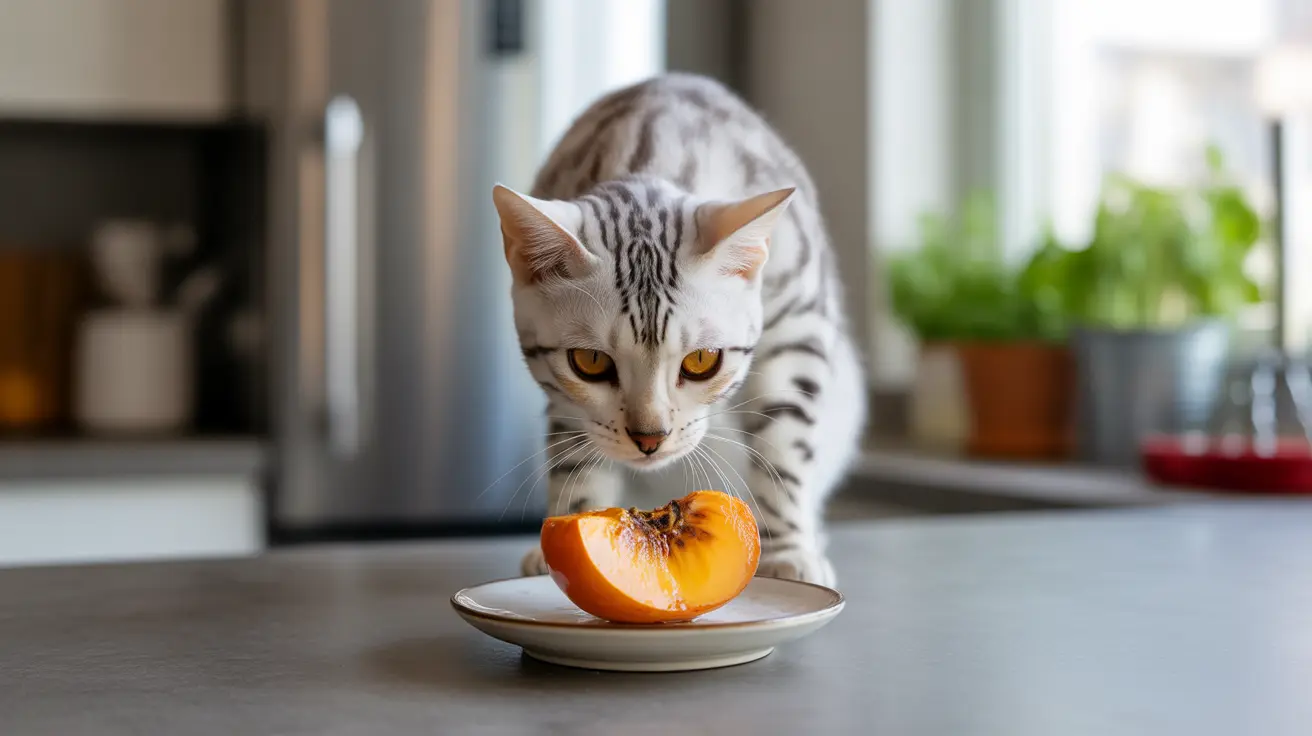As pet owners explore healthy treat options for their feline friends, the question of whether cats can have persimmon often arises. While these sweet fruits aren't toxic to cats, there are important guidelines and precautions to consider before sharing this exotic treat with your furry companion.
In this comprehensive guide, we'll explore everything you need to know about feeding persimmons to cats, including safety considerations, potential benefits, and crucial preparation steps to protect your pet's health.
Understanding Persimmons and Cat Safety
Persimmons are safe for cats when properly prepared and served in moderation. The ripe flesh of the fruit contains no toxic compounds that would harm your feline friend. However, it's crucial to understand that cats are obligate carnivores, meaning their bodies are designed to process meat rather than fruits.
Only the soft, ripe flesh of persimmons should ever be offered to cats. The seeds, skin, and leaves must always be removed as they present serious health risks.
Proper Preparation and Serving Guidelines
When preparing persimmons for your cat, follow these essential steps:
- Choose fully ripe persimmons (they should be soft and deep orange)
- Thoroughly wash the fruit
- Remove all seeds, skin, and stems
- Cut the flesh into small, manageable pieces
- Offer only a tiny amount (about the size of a pencil eraser)
Never serve dried persimmons or persimmon-based products, as these often contain added sugars or preservatives that could harm your cat.
Potential Benefits and Limitations
While persimmons contain vitamins A, C, and E, along with fiber and potassium, cats already receive these nutrients from their regular diet. The fruit's benefits for cats are minimal compared to their standard cat food.
Any nutritional advantages are outweighed by the risks of overfeeding fruit to cats, who lack the digestive enzymes needed to process plant matter efficiently.
Understanding the Risks
Digestive Issues
Unripe persimmons contain high levels of tannins that can cause severe digestive upset in cats. Even ripe persimmons, when eaten in excess, may lead to:
- Vomiting
- Diarrhea
- Stomach pain
- Loss of appetite
Physical Hazards
The seeds and skin of persimmons pose serious risks including:
- Choking hazards
- Intestinal blockages
- Potential need for emergency surgery if large pieces are swallowed
When to Avoid Persimmons
Some cats should never be given persimmons, including:
- Kittens under one year
- Cats with diabetes
- Cats with sensitive stomachs
- Pets with known fruit allergies
- Cats on special diets
Frequently Asked Questions
Can cats safely eat ripe persimmon flesh, and how should it be prepared?
Yes, cats can safely eat small amounts of ripe persimmon flesh. Always remove seeds, skin, and leaves, then cut the flesh into tiny pieces. Serve no more than a small taste as an occasional treat.
What are the health benefits and nutritional value of persimmons for cats?
While persimmons contain vitamins A, C, and E, plus fiber and potassium, cats derive minimal nutritional benefit from this fruit. Their primary nutrition should come from meat-based cat food.
What risks do persimmon seeds, skin, or unripe fruit pose to cats?
Seeds and skin can cause choking or intestinal blockages. Unripe persimmons contain high levels of tannins that can cause severe digestive upset, including vomiting and diarrhea.
How much persimmon can I give my cat without causing digestive problems?
Offer no more than a small piece (about the size of a pencil eraser) once or twice a month. Always monitor your cat for any adverse reactions after introducing persimmon.
Should kittens eat persimmons, and when is it safe to introduce this fruit?
Kittens should not eat persimmons until they're at least one year old. Even then, consult with your veterinarian before introducing any new foods to your cat's diet.
Remember, while persimmons aren't toxic to cats, they should never be a regular part of your cat's diet. If you're considering introducing persimmons or any new food to your cat's diet, always consult with your veterinarian first.






